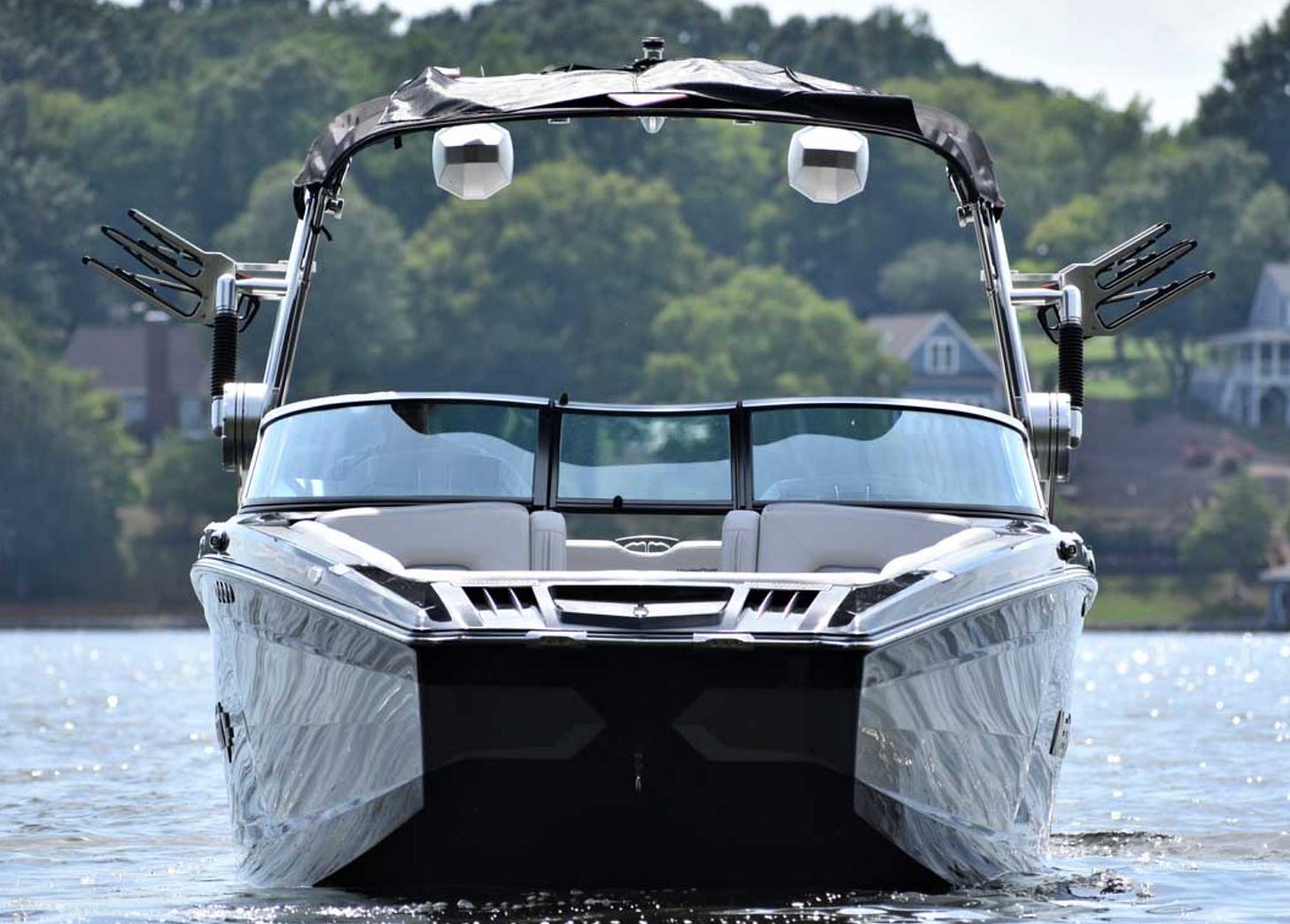The Wake Boat Controversy Is Still Making Waves Across Vermont
Both Sides, Full Story: You Decide.
A Rule with Ripple Effects
On April 15, 2024, Vermont enacted its first-ever statewide rule regulating wake boats and wakesports under the Use of Public Waters Rules (UPW Rules). The rule confines wakesurfing and wakeboarding to 30 designated inland lakes, each with a minimum 50-acre zone at least 500 feet from shore and 20 feet deep. Additionally, operators must designate a single “home lake” and decontaminate ballast tanks before visiting another lake, aiming to prevent the spread of invasive species. The rule does not cover Lake Champlain, Lake Memphremagog, Wallace Pond, or the Connecticut River reservoirs—areas outside the DEC’s shoreline jurisdiction (Memphremagog Watershed Association).
The Lakes in the Crosshairs
Only 30 inland lakes meet the criteria for wake zones. Here’s a table of notable lakes currently open to wakesports—and a handful of smaller ones that barely qualify:
These lakes qualify under purely technical criteria—contiguous area, depth, and buffer—with no weighing of local use, ecological sensitivity, or traffic patterns (VTDigger).
Sounding Off: Why the Uproar?
Voices for Further Restrictions
Neighborhood lake associations, local selectboards, and conservation coalitions like Responsible Wakes for Vermont Lakes argue that the statewide rule doesn’t go far enough on certain waters. They point to:
Safety risks: On narrow or shallow lakes, wakes—even at required distance—can swamp small boats or capsized paddlers, as happened on Shadow Lake when a passing wake lifted a dock and its occupant (VTDigger).
Invasive species danger: Wake boat ballast systems can carry zebra mussel larvae or milfoil fragments to otherwise clean lakes—one boat is all it takes (Lake Fairlee Association).
Ecological sensitivity: Lakes like Willoughby, Caspian, Fairlee and Shadow Lake host loons and fragile ecosystems; proponents say no wakesport zones should be allowed, regardless of size (VTDigger).
Nine associations have petitioned the Vermont Department of Environmental Conservation (DEC) for additional bans on 10 lakes including Lake Willoughby, Caspian Lake, Lake Fairlee, Shadow Lake, Great and Little Averill, Lake Parker, Echo Lake, Waterbury Reservoir, and Joe’s Pond. Each petition cites safety, ecological or recreation‑conflict concerns and all petitions proceed through DEC’s public meeting process (Memphremagog Watershed Association).
Voices for Caution, Not Closure
Wake boat owners, paddling outfitters, and some motorized boating advocates stress that:
Wake sports account for only ~1% of motorboat activity in the state, making the rule already restrictive enough (addisonindependent.com).
Education, not prohibition, would better solve conflicts—most wake boaters already try to stay 500 feet from shore and not crowd small lakes.
Concentrating wakesports in fewer lakes may increase conflicts on those waters, as seen in feedback from Waterbury, where one zone overlaps heavily used paddling routes and campsites (Memphremagog Watershed Association).
They worry further bans could disadvantage boaters without demonstrably improving lake health and call for enforcement tools rather than closures.
Weighing the Evidence
While both groups raise valid points, public hearings and state correspondence reveal DEC’s consistent approach:
Erosion and sediment disturbance from high‑energy wakes can occur in shallow water and near shore—but at 500 feet offshore in >20‑foot water, studies show the impact is comparable to wakeboats using ballast turned off (addisonindependent.com, Memphremagog Watershed Association, Maine).
Ballast‑borne invasives are a well‑documented threat. Wakeboat systems trap lake water and can transfer organisms between lakes even after draining—mvellived larvae pose real risk (Maine, vermontlakes.org).
Safety incidents have occurred in small lakes; while rare, a single accident—like capsizing from a wake—can seriously affect public trust in lake safety (VTDigger, addisonindependent.com).
DEC staff note compliance has been high and no major conflicts materialized in the first summer, but emphasize that public meetings and petitions are designed to capture lakes where rules may not be protective enough for unique local circumstances (addisonindependent.com).
What Comes Next
The DEC is hosting two public hearings—one held previously in late 2024, and another ongoing through summer 2025—followed by a formal comment period closing in December 2024. Petitioned lakes under review include the ten named above; final decisions may result in additional bans, leaving fewer than 30 lakes open to wakesports (Waterbury Roundabout).
Meanwhile, lawmakers and DEC officials signal interest in possibly tightening standards in 2026—expanding buffers, raising zone size requirements, or codifying the home‑lake rule in statute to ensure long‑term enforcement capacity.
Conclusion: Why Vermont’s Policy Leans Toward Protection
As a Vermont-based observer following the policy process closely, the facts point clearly toward the precautionary principle being dominant in state policy. DEC’s rule was a compromise: allowing wakesports on some lakes but only under strictly defined, science‑based conditions. Yet homegrown petitions reflect grassroots skepticism that those conditions go far enough in lakes with local safety or ecological sensitivity concerns.
Vermont’s identity as a protector of quiet waterscapes and fragile ecosystems has infused the debate from the start. Given documented risks—erosion, wildlife disturbance, invasive spread—and rising local demand for lake-specific protections, the state is poised to uphold and potentially expand restrictions. While wake sport enthusiasts may remain a vocal minority, the public interest in clean, safe, tranquil lakes appears to carry the day.
The wake boat controversy isn’t just making waves—it may be shaping the future of how Vermonters share and protect their waters.



